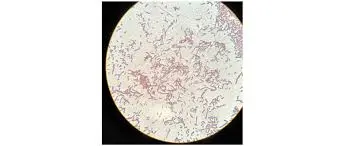Magnification is one of the first concepts beginners encounter when using a microscope. You often see numbers like 40x, 100x, or 1000x, but what do these values really represent? Understanding magnification helps you choose the right microscope, capture clearer images, and explore the microscopic world with precision.
In this guide, we break down magnification in simple, practical terms—perfect for students, hobbyists, educators, and anyone starting with microscopy.
What Does “Magnification” Mean?
Magnification tells you how many times larger a microscope makes an object appear compared to its real size. Learn more
40x magnification → the image is 40 times larger
100x magnification → the image is 100 times larger
1000x magnification → the image is 1000 times larger
A microscope achieves this using two lenses:
Objective lens (closest to the sample)
Eyepiece lens (where your eye looks)
These two values multiply to give the total magnification.
How Total Magnification Works
Total Magnification = Objective Lens × Eyepiece Lens
Example:
4x objective × 10x eyepiece = 40x
10x objective × 10x eyepiece = 100x
100x objective × 10x eyepiece = 1000x
This is why most microscopes include several objectives on a rotating turret.
What Can You See at Each Magnification Level?
40x Magnification (Low Power)
Perfect for beginners and scanning large areas.
You can observe:
Plant cells as large structures
Fibers, hair, and tiny insects
Pollen grains
Crystals and sand grains

Best use: overview of the sample before going deeper.
100x Magnification (Medium Power)
Provides more detail while keeping the field of view large.
You can observe:
Individual plant cells
Yeast
Muscle fibers
Surface textures
Protozoa and simple microorganisms

Best use: basic cell structures and general shape identification.
400x Magnification (High Power)
Often used in classrooms and laboratories.
You can observe:
Cell membranes
Cell nuclei
Tiny microorganisms
Tissue details
Bacteria clusters (not individual bacteria clearly but as groups)

Best use: exploring biological samples in greater detail.
1000x Magnification (Very High Power)
Requires a powerful 100x oil immersion objective for a sharp image.
You can observe:
Bacterial shapes
Very fine cell details
Small protists
Detailed structures within cells

Best use: advanced observation with high-quality lighting and lenses.
Magnification vs. Resolution: What’s the Difference?
Many beginners think magnification alone creates a clear image—but that’s not correct.
Magnification enlarges the image
Resolution determines how sharp and detailed the image is
A blurry 1000x image is less useful than a sharp 100x image.
Good lighting, clean lenses, and proper focusing all improve resolution.
Tips for Getting Clearer Images at Any Magnification
Start with low magnification and increase gradually
Adjust the light intensity for each objective
Clean lenses gently with lens paper
Use fine focus at 400x and higher
For 1000x, use the correct immersion oil
Center the sample before switching objectives
These simple steps dramatically improve clarity.
Why Understanding Magnification Matters
Knowing what 40x, 100x, or 1000x means helps you:
Choose the right microscope
Select the proper objective for your sample
Capture better photos and videos
Avoid blurry or low-contrast images
Make microscopy more enjoyable and efficient
Whether you're a beginner or an enthusiast, mastering magnification opens the door to more precise and fascinating exploration.
Add high-resolution microscopy to your lab
